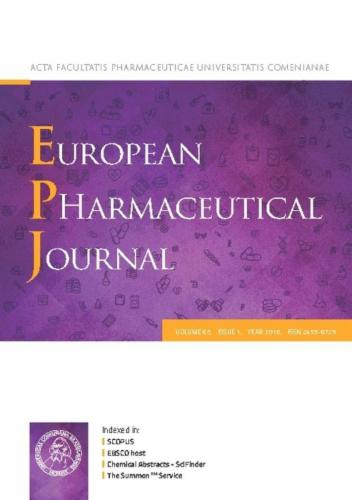一种新型抗结核药物的人群药代动力学和暴露反应研究,为其III期临床试验剂量设计提供信息。
IF 4.7
3区 医学
Q1 PHARMACOLOGY & PHARMACY
引用次数: 0
摘要
尽管贝达喹啉(BDQ)获得了治疗耐多药结核病(MDR-TB)的有条件批准,但由于QT间期延长的风险,增加了一个黑框警告。WX-081是一种有前景的二线药物,已完成II期临床试验,具有相当的抗结核活性和更好的心脏安全性。其活性代谢物WX-081-M3的积累导致QT期延长,而剂量、暴露与反应之间的关系尚未确定。因此,III期研究的剂量设计具有挑战性。本研究对WX-081进行了首次群体药代动力学(PPK)和暴露反应(E-R)分析。从24名健康志愿者和48名结核病患者中采集1610个WX-081和1580个WX-081- m3浓度用于PPK研究。对20例接受BDQ和WX-081治疗的耐多药结核病患者的药动学参数和痰培养量进行E-R分析。WX-081和WX-081- m3的吸收用三室模型描述,WX-081和WX-081- m3的分布和消除分别用三室和两室模型描述。E-R分析表明,WX-081的临床疗效与BDQ相当,可以用WX-081的稳态平均浓度(Cavg,ss)来评价。根据不同方案的模拟结果,考虑到疗效和安全性,建议450mg每日一次(QD),连续1周,随后300mg QD,连续1周,150mg QD,连续22周。本研究首次揭示了WX-081的药代动力学和疗效特征,并提出了剂量优化策略,以促进其临床开发。本文章由计算机程序翻译,如有差异,请以英文原文为准。

Population pharmacokinetic and exposure-response study of a novel anti-tuberculosis drug to inform its dosage design in phase III clinical trial
Although bedaquiline (BDQ) received conditional approval for multi-drug resistance tuberculosis (MDR-TB), a black box warning was added due to QT prolongation risk. WX-081, a promising second-in-class drug that finished phase II clinical trial, exhibited comparable anti-TB activity and better cardiac safety. The accumulation of its active metabolite WX-081-M3 leads to QT prolongation, whereas the relationships between dosage, exposure and response have not been established. Accordingly, the dosage design for phase III study is challenging. Here, the first population pharmacokinetic (PPK) and exposure-response (E-R) analysis were conducted for WX-081. 1610 WX-081 and 1580 WX-081-M3 concentrations were collected from 24 healthy volunteers and 48 tuberculosis patients for PPK study. The pharmacokinetic parameters and sputum culture conversions of 20 MDR-TB patients receiving BDQ and WX-081 were used for E-R analysis. The absorption of WX-081 was well described by a three-compartments transit model, while the distribution and elimination profiles of WX-081 and WX-081-M3 were captured by three- and two-compartments models, respectively. E-R analysis demonstrated that the clinical efficacy of WX-081 is comparable with BDQ and can be evaluated by average concentration at steady state (Cavg,ss) of WX-081. According to the simulation results of different regimens, the dosage of 450 mg once daily (QD) for 1 week and subsequent 300 mg QD for 1 week followed by 150 mg QD for 22 weeks was recommended considering both efficacy and safety. Our study revealed the PK and efficacy profiles of WX-081 for the first time and proposed a dose optimization strategy to facilitate its clinical development.
求助全文
通过发布文献求助,成功后即可免费获取论文全文。
去求助
来源期刊
CiteScore
9.60
自引率
2.20%
发文量
248
审稿时长
50 days
期刊介绍:
The journal publishes research articles, review articles and scientific commentaries on all aspects of the pharmaceutical sciences with emphasis on conceptual novelty and scientific quality. The Editors welcome articles in this multidisciplinary field, with a focus on topics relevant for drug discovery and development.
More specifically, the Journal publishes reports on medicinal chemistry, pharmacology, drug absorption and metabolism, pharmacokinetics and pharmacodynamics, pharmaceutical and biomedical analysis, drug delivery (including gene delivery), drug targeting, pharmaceutical technology, pharmaceutical biotechnology and clinical drug evaluation. The journal will typically not give priority to manuscripts focusing primarily on organic synthesis, natural products, adaptation of analytical approaches, or discussions pertaining to drug policy making.
Scientific commentaries and review articles are generally by invitation only or by consent of the Editors. Proceedings of scientific meetings may be published as special issues or supplements to the Journal.

 求助内容:
求助内容: 应助结果提醒方式:
应助结果提醒方式:


